This site uses cookies as defined in our Cookie Policy, by continuing to use this site you agree to their use.
Continue
| Arrive | Depart | ||||||
| 19th19 | JunJun | 202525 | Southampton, England, embark on the Azamara Quest | 18:00 | |||
Lying near the head of Southampton Water, a peninsula between the estuaries of the Rivers Test and Itchen, Southampton is Britain’s largest cruise port. It has been one of England’s major ports since the Middle Ages, when it exported wool and hides from the hinterland and imported wine from Bordeaux. The city suffered heavy damage during World War Two and as a result the centre has been extensively rebuilt, but there are still some interesting medieval buildings including the Bargate, one of the finest city gatehouses in England. Muse on voyages past as you sail in or out of Southampton (it was the departure point for the Mayflower in 1620 and the Titanic in 1912), or visit the nearby attractions of London, Bath, Stonehenge and Lands End. | |||||||
| 20th20 | JunJun | 202525 | At Sea | ||||
| 21st21 | JunJun | 202525 | Leith, Scotland | 11:15 | |||
To discover Edinburgh take a walk down The Royal Mile for Edinburgh Castle, the Stone of Destiny and the Palace of Holyroodhouse; but for those itching to get out on the links, there’s no better place than this. | |||||||
| 22nd22 | JunJun | 202525 | Leith, Scotland | 18:30 | |||
To discover Edinburgh take a walk down The Royal Mile for Edinburgh Castle, the Stone of Destiny and the Palace of Holyroodhouse; but for those itching to get out on the links, there’s no better place than this. | |||||||
| 23rd23 | JunJun | 202525 | Aberdeen, Scotland | 08:00 | 22:00 | ||
With close to 220,000 inhabitants, Aberdeen is Scotland's third most populous city. Locally quarried grey granite was used during the mid-18th to mid-20th centuries for many of Aberdeen's buildings, and hence the nicknames it has earned as the Granite City, or the Grey City. Aberdeen granite was also used to build the terraces of the Houses of Parliament and Waterloo Bridge in London. Since the discovery of North Sea oil in the 1970s, Aberdeen has also been called the Oil Capital of Europe or the Energy Capital of Europe. It is no wonder that because of the oil fields in the North Sea, Aberdeen's seaport is very important. The Heliport with its flights to the oil fields is one of the busiest commercial heliports in the world. Urban life and natural splendor intersect in the Granite City's stunning green spaces, lush Victorian gardens, ornate architecture, and sandy beaches. | |||||||
| 24th24 | JunJun | 202525 | Invergordon, Scotland | 08:00 | 19:00 | ||
The port of Invergordon is your gateway to the Great Glen, an area of Scotland that includes Loch Ness and the city of Inverness. Inverness, the capital of the Highlands, has the flavor of a Lowland town, its winds blowing in a sea-salt air from the Moray Firth. The Great Glen is also home to one of the world's most famous monster myths: in 1933, during a quiet news week, the editor of a local paper decided to run a story about a strange sighting of something splashing about in Loch Ness. But there's more to look for here besides Nessie, including inland lochs, craggy and steep-sided mountains, rugged promontories, deep inlets, brilliant purple and emerald moorland, and forests filled with astonishingly varied wildlife, including mountain hares, red deer, golden eagles, and ospreys. Take a superb natural setting of mountains, waterfalls and serene lochs (and add one sea monster), pepper the landscape with castles, toss in a trail of whiskey distilleries and there you have it: Invergordon. | |||||||
| 25th25 | JunJun | 202525 | Kirkwall, Orkney Islands, Scotland | 08:30 | 22:00 | ||
In bustling Kirkwall, the main town on Orkney, there's plenty to see in the narrow, winding streets extending from the harbor. The cathedral and some museums are highlights. The 70 islands of Orkney are a pleasing, gently rolling panorama of fields, heather-cloaked moors and lakes, while the imposing St. Magnus Cathedral dominates Kirkwall, the main town linking east and west. | |||||||
| 26th26 | JunJun | 202525 | Lerwick, Shetland Islands, Scotland | 08:00 | 17:00 | ||
Founded by Dutch fishermen in the 17th century, Lerwick today is a busy town and administrative center. Handsome stone buildings—known as lodberries—line the harbor; they provided loading bays for goods, some of them illegal. The town's twisting flagstone lanes and harbor once heaved with activity, and Lerwick is still an active port today. This is also where most visitors to Shetland dock, spilling out of cruise ships, allowing passengers to walk around the town. Secluded and seaswept, the Shetland Islands are home to a unique blend of Scandinavian and Scottish culture. Rocky cliffs and rich farmland are yours to explore over 100 islands that embrace a slower, more authentic pace of life. | |||||||
| 27th27 | JunJun | 202525 | Stornoway, Isle of Lewis, Scotland | 08:00 | 21:00 | ||
Tour description Stornoway, Scotland The Isle of Lewis and Harris is the northernmost and largest of the Outer Hebrides-the Western Isles in common parlance. The island's only major town, Stornoway, is on a nearly landlocked harbor on the east coast of Lewis. It's the port capital for the Outer Hebrides and the island's cultural center, such that it is. Stornoway has an increasing number of good restaurants. Lewis has some fine historic attractions, including the Calanais Standing Stones-a truly magical place. The Uists are known for their rare, plentiful wildlife. Stornoway. Besides being the island's main entry point for ferries, Stornoway is also Lewis's main arts center. You'll find some good restaurants in town if you want to have lunch off the ship. The town can be explored by bicycle if you are so inclined. Local rental shops can give you advice on where to ride, including a route to Tolsta that takes in five stunning beaches before reaching the edge of moorland. An Lanntair Arts Centre. The fabulous An Lanntair Arts Centre has exhibitions of contemporary and traditional art, as well as a cinema, a gift shop, and a restaurant serving international and Scottish fare. There are frequent traditional musical and theatrical events in the impressive auditorium. Kenneth St.. Black House. In the small community of Arnol, the Black House is a well-preserved example of an increasingly rare type of traditional Hebridean home. Once common throughout the islands-even into the 1950s-these dwellings were built without mortar and thatched on a timber framework without eaves. Other characteristic features include an open central peat hearth and the absence of a chimney-hence the soot and the designation black. On display inside are many of the house's original furnishings. To reach Arnol from Port of Ness, head south on the A857 and pick up the A858 at Barvas. Off A858, 21 mi southwest of Port of Ness. Admission charged. Calanais Standing Stones. These impressive stones are actually part of a cluster of several different archaeological sites in this area. Probably positioned in several stages between 3000 BC and 1500 BC, the grouping consists of an avenue of 19 monoliths extending northward from a circle of 13 stones, with other rows leading south, east, and west. Ruins of a cairn sit within the circle on the east side. Researchers believe they may have been used for astronomical observations, but you can create your own explanations. The visitor center has an exhibit on the stones, a gift shop, and a tearoom. On an unmarked road off A858. Admission charged. Dun Carloway. One of the best-preserved Iron Age brochs (circular stone towers) in Scotland, Dun Carloway dominates the scattered community of Carloway. The mysterious tower was probably built around 2,000 years ago as protection against seaborne raiders. The Dun Broch Centre explains more about the broch and its setting. Off A857. Gearrannan. Up a side road north from Carloway, Gearrannan is an old black-house village that has been brought back to life with a museum screening excellent short films on peat cutting and weaving. For a unique experience, groups can rent the restored houses. Leverburgh. At Leverburgh you can take the ferry to North Uist. Nearby Northton has several attractions; St. Clement's Church at Rodel is particularly worth a visit. MacGillivray Centre. Located in a round building overlooking the bay, the MacGillivray Centre gives insight into the life and work of William MacGillivray (1796-1852), a noted naturalist with strong links to Harris. MacGillivray authored the five-volume History of British Birds. This is a great location for a picnic (there are tables for just such a purpose). A walk to a ruined church starts at the parking lot. A859, Northton. Seallam! Visitor Centre and Co Leis Thu? Genealogical Research Centre. The center is where you can trace your Western Isles ancestry. Photographs and interpretive signs describe the history of Harris and its people. The owners organize guided walks and cultural evenings weekly between May and September. Off A859, Northton. Admission charged. St. Clement's Church. At the southernmost point of Harris is the community of Rodel, where you can find St. Clement's Church, a cruciform church standing on a hillock. This is the most impressive pre-Reformation church in the Outer Hebrides; it was built around 1500 and contains the magnificently sculptured tomb (1528) of the church's builder, Alasdair Crotach, MacLeod chief of Dunvegan Castle. Rodel is 3 mi south of Leverburgh and 21 mi south of Tarbert. A859, Rodel. Port of Ness. The stark, windswept community of Port of Ness, 30 mi north of Stornoway, cradles a small harbor squeezed in among the rocks. Butt of Lewis Lighthouse. At the northernmost point of Lewis stands the Butt of Lewis Lighthouse, designed by David and Thomas Stevenson (of the prominent engineering family whose best-known member was not an engineer at all, but the novelist Robert Louis Stevenson). The structure was first lighted in 1862. The adjacent cliffs provide a good vantage point for viewing seabirds, whales, and porpoises. The lighthouse is northwest of Port of Ness along the B8014. Shopping Harris tweed is available at many outlets on the islands, including some of the weavers' homes; keep an eye out for signs directing you to weavers' workshops. Harris Tweed Artisans Cooperative. The Harris Tweed Artisans Cooperative sells stylish and quirky hand-crafted tweed clothing, hats, accessories, all made by artists belonging to the cooperative. 40 Point St., Stornoway. Borgh Pottery. At Borgh Pottery, open from Monday to Saturday 9:30 to 6, you can buy attractive hand-thrown studio pottery made on the premises, including lamps, vases, mugs, and dishes. Fivepenny House, A857, Borve. Colorful row houses and red-hulled fishing vessels line the shores of this picturesque port. The largest town in the Outer Hebrides, Stornoway serves as a gateway to the Western Isles. | |||||||
| 28th28 | JunJun | 202525 | Oban, Scotland | 08:00 | 18:00 | ||
Oban, "little bay" in Gaelic, today has a resident population of 8,500 and is the unofficial capital of the West Highlands - the "Gateway to the Isles." The panoramic views of the mountains, lochs and islands which have captivated artists, authors, composers, and poets for centuries are as striking now as they were when Dunollie Castle, a ruined keep which has stood sentinel over the narrow entrance to the sheltered bay for around six hundred years, was the northern outpost of the Dalriadic Scots. It is no surprise to find Oban in the 21st-century remains a magnet for travellers from all over the world. The town's present day popularity owes much to the Victorians, and as early as 1812, when the Comet steamship linked Oban with Glasgow, the town played host to intrepid travellers touring Staffa - the inspiration for Mendelssohn's Hebridean Overture - and Iona - home of Scottish Christianity since St Columba stepped ashore in AD563. Indeed once Oban had the royal seal of approval from Queen Victoria, who called it "one of the finest spots we have seen," the town's destiny as an endearingly enchanting holiday destination was as firmly set as the lava columns of Fingal's Cave in Oban is justifiably known as the “gateway to the Isles.” The town's south pier is the embarkation point for car ferries to Mull, Coll, Tiree, Barra, South Uist, Colonsay, Lismore and Islay. From these islands you can travel further a field to Iona, Staffa and to many of the smaller less well known isles. Under the craggy, emerald peaks of the Scottish Highlands lies a tiny port town with a heart for adventure. Gaelic for “little bay”, Oban is a captivating getaway that fulfills your every dream of Scotland. | |||||||
| 29th29 | JunJun | 202525 | Greenock, Scotland | 08:00 | |||
Trendy stores, a booming cultural life, fascinating architecture, and stylish restaurants reinforce Glasgow's claim to being Scotland's most exciting city. After decades of decline, it has experienced an urban renaissance uniquely its own. The city’s grand architecture reflects a prosperous past built on trade and shipbuilding. Today buildings by Charles Rennie Mackintosh hold pride of place along with the Zaha Hadid–designed Riverside Museum.Glasgow (the "dear green place," as it was known) was founded some 1,500 years ago. Legend has it that the king of Strathclyde, irate about his wife's infidelity, had a ring he had given her thrown into the river Clyde. (Apparently she had passed it on to an admirer.) When the king demanded to know where the ring had gone, the distraught queen asked the advice of her confessor, St. Mungo. He suggested fishing for it—and the first salmon to emerge had the ring in its mouth. The moment is commemorated on the city's coat of arms.The medieval city expanded when it was given a royal license to trade; the current High Street was the main thoroughfare at the time. The vast profits from American cotton and tobacco built the grand mansions of the Merchant City in the 18th century. In the 19th century the river Clyde became the center of a vibrant shipbuilding industry, fed by the city’s iron and steel works. The city grew again, but its internal divisions grew at the same time. The West End harbored the elegant homes of the newly rich shipyard owners. Down by the river, areas like the infamous Gorbals, with its crowded slums, sheltered the laborers who built the ships. They came from the Highlands, expelled to make way for sheep, or from Ireland, where the potato famines drove thousands from their homes.During the 19th century the population grew from 80,000 to more than a million. And the new prosperity gave Glasgow its grand neoclassical buildings, such as those built by Alexander "Greek" Thomson, as well as the adventurous visionary buildings designed by Charles Rennie Mackintosh and others who produced Glasgow’s Arts and Crafts movement. The City Chambers, built in 1888, are a proud statement in marble and gold sandstone, a clear symbol of the wealthy and powerful Victorian industrialists' hopes for the future.The decline of shipbuilding and the closure of the factories led to much speculation as to what direction the city would take now. The curious thing is that, at least in part, the past gave the city a new lease of life. It was as if people looked at their city and saw Glasgow’s beauty for the first time: its extraordinarily rich architectural heritage, its leafy parks, its artistic heritage, and its complex social history. Today Glasgow is a vibrant cultural center and a commercial hub, as well as a launching pad from which to explore the rest of Scotland, which, as it turns out, is not so far away. In fact, it takes only 40 minutes to reach Loch Lomond, where the other Scotland begins. Glasgow is a lively and cosmopolitan city, making a name as a vibrant center of 21st century design, set against a background of exceptional Victorian architecture, state-of-the-art towers and ubiquitous pubs. | |||||||
| 30th30 | JunJun | 202525 | Greenock, Scotland | 17:00 | |||
Trendy stores, a booming cultural life, fascinating architecture, and stylish restaurants reinforce Glasgow's claim to being Scotland's most exciting city. After decades of decline, it has experienced an urban renaissance uniquely its own. The city’s grand architecture reflects a prosperous past built on trade and shipbuilding. Today buildings by Charles Rennie Mackintosh hold pride of place along with the Zaha Hadid–designed Riverside Museum.Glasgow (the "dear green place," as it was known) was founded some 1,500 years ago. Legend has it that the king of Strathclyde, irate about his wife's infidelity, had a ring he had given her thrown into the river Clyde. (Apparently she had passed it on to an admirer.) When the king demanded to know where the ring had gone, the distraught queen asked the advice of her confessor, St. Mungo. He suggested fishing for it—and the first salmon to emerge had the ring in its mouth. The moment is commemorated on the city's coat of arms.The medieval city expanded when it was given a royal license to trade; the current High Street was the main thoroughfare at the time. The vast profits from American cotton and tobacco built the grand mansions of the Merchant City in the 18th century. In the 19th century the river Clyde became the center of a vibrant shipbuilding industry, fed by the city’s iron and steel works. The city grew again, but its internal divisions grew at the same time. The West End harbored the elegant homes of the newly rich shipyard owners. Down by the river, areas like the infamous Gorbals, with its crowded slums, sheltered the laborers who built the ships. They came from the Highlands, expelled to make way for sheep, or from Ireland, where the potato famines drove thousands from their homes.During the 19th century the population grew from 80,000 to more than a million. And the new prosperity gave Glasgow its grand neoclassical buildings, such as those built by Alexander "Greek" Thomson, as well as the adventurous visionary buildings designed by Charles Rennie Mackintosh and others who produced Glasgow’s Arts and Crafts movement. The City Chambers, built in 1888, are a proud statement in marble and gold sandstone, a clear symbol of the wealthy and powerful Victorian industrialists' hopes for the future.The decline of shipbuilding and the closure of the factories led to much speculation as to what direction the city would take now. The curious thing is that, at least in part, the past gave the city a new lease of life. It was as if people looked at their city and saw Glasgow’s beauty for the first time: its extraordinarily rich architectural heritage, its leafy parks, its artistic heritage, and its complex social history. Today Glasgow is a vibrant cultural center and a commercial hub, as well as a launching pad from which to explore the rest of Scotland, which, as it turns out, is not so far away. In fact, it takes only 40 minutes to reach Loch Lomond, where the other Scotland begins. Glasgow is a lively and cosmopolitan city, making a name as a vibrant center of 21st century design, set against a background of exceptional Victorian architecture, state-of-the-art towers and ubiquitous pubs. | |||||||
| 1st01 | JulJul | 202525 | Dublin, Ireland, disembark the Azamara Quest | 06:00 | |||
Dublin is making a comeback. The decade-long "Celtic Tiger" boom era was quickly followed by the Great Recession, but The Recovery has finally taken a precarious hold. For visitors, this newer and wiser Dublin has become one of western Europe's most popular and delightful urban destinations. Whether or not you're out to enjoy the old or new Dublin, you'll find it a colossally entertaining city, all the more astonishing considering its intimate size.It is ironic and telling that James Joyce chose Dublin as the setting for his famous Ulysses, Dubliners, and A Portrait of the Artist as a Young Man because it was a "center of paralysis" where nothing much ever changed. Which only proves that even the greats get it wrong sometimes. Indeed, if Joyce were to return to his once-genteel hometown today—disappointed with the city's provincial outlook, he left it in 1902 at the age of 20—and take a quasi-Homeric odyssey through the city (as he so famously does in Ulysses), would he even recognize Dublin as his "Dear Dirty Dumpling, foostherfather of fingalls and dotthergills"?For instance, what would he make of Temple Bar—the city's erstwhile down-at-the-heels neighborhood, now crammed with cafés and trendy hotels and suffused with a nonstop, international-party atmosphere? Or the simple sophistication of the open-air restaurants of the tiny Italian Quarter (named Quartier Bloom after his own creation), complete with sultry tango lessons? Or of the hot–cool Irishness, where every aspect of Celtic culture results in sold-out theaters, from Once, the cult indie movie and Broadway hit, to Riverdance, the old Irish mass-jig recast as a Las Vegas extravaganza? Plus, the resurrected Joyce might be stirred by the songs of Hozier, fired up by the sultry acting of Michael Fassbender, and moved by the award-winning novels of Colum McCann. As for Ireland's capital, it's packed with elegant shops and hotels, theaters, galleries, coffeehouses, and a stunning variety of new, creative little restaurants can be found on almost every street in Dublin, transforming the provincial city that suffocated Joyce into a place almost as cosmopolitan as the Paris to which he fled. And the locals are a hell of a lot more fun! Now that the economy has finally turned a corner, Dublin citizens can cast a cool eye over the last 20 crazy years. Some argue that the boomtown transformation of their heretofore-tranquil city has permanently affected its spirit and character. These skeptics (skepticism long being a favorite pastime in the capital city) await the outcome of "Dublin: The Sequel," and their greatest fear is the possibility that the tattered old lady on the Liffey has become a little less unique, a little more like everywhere else.Oh ye of little faith: the rare ole gem that is Dublin is far from buried. The fundamentals—the Georgian elegance of Merrion Square, the Norman drama of Christ Church Cathedral, the foamy pint at an atmospheric pub—are still on hand to gratify. Most of all, there are the locals themselves: the nod and grin when you catch their eye on the street, the eagerness to hear half your life story before they tell you all of theirs, and their paradoxically dark but warm sense of humor. It's expected that 2016 will be an extra-special year in the capital, as centenary celebrations of the fateful 1916 Easter Rising will dominate much of the cultural calendar. Dublin offers a wealth of historic sites dating back to a 1,000-year-old Viking village (including pubs that are almost as old), and as one might expect of the Irish, there is a tale to be told about every one. | |||||||
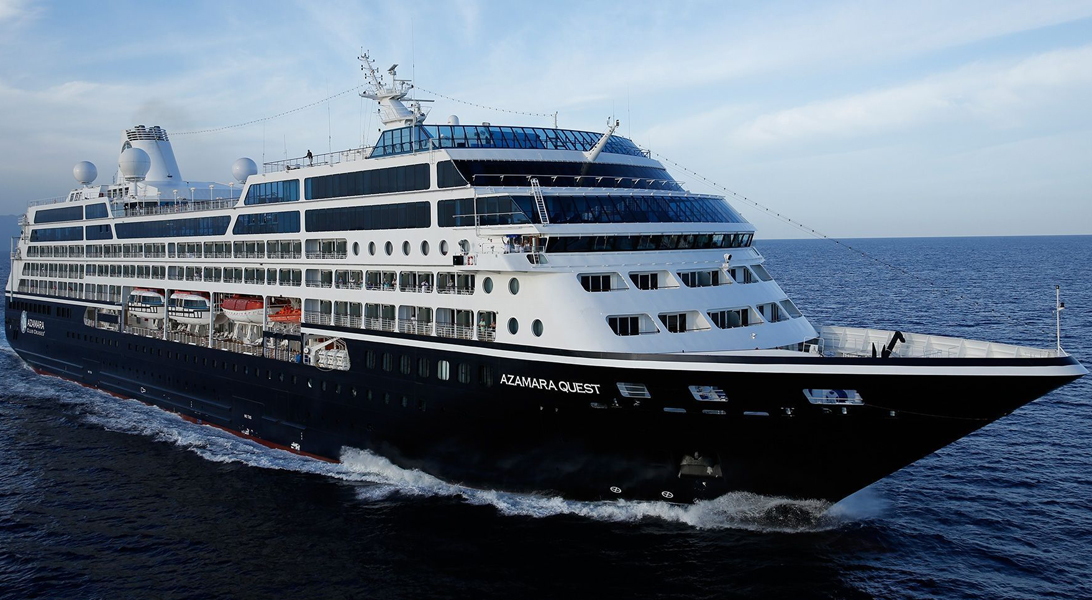








The images shown are for illustration purposes only and may not be an exact representation of what you find on the ship.
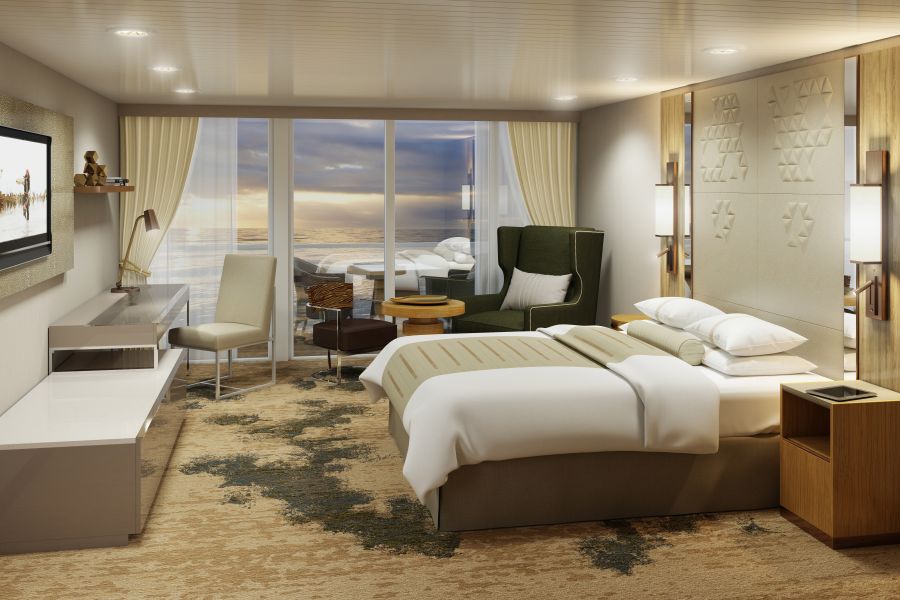
The Club Continents suites are our smaller suites, yet spacious and comfortable. These suites, too, are transformed with a completely new décor inspired by nature’s elements of water, sand, wood and stone. They feature two lower beds convertible to queen size, comfortable sitting area, a spacious, newly decorated bathroom – either with a bath tub or shower, large flat-screen TV, mini-bar, and plenty of other fine amenities. A wonderful and refined home away from home.
Features:
Complimentary Features:
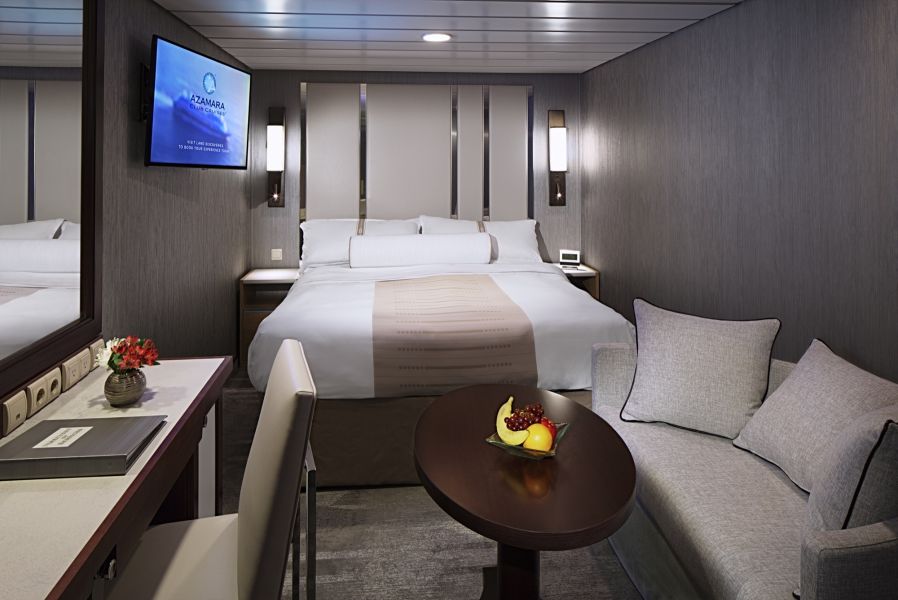
| Grade Code | From | To | |
| Z | Interior Guarantee | £1,969 | £1,969 |
Welcome to your vacation home with ocean views, sea breezes, and all the style and amenities of a boutique hotel. Relax with plush cotton robes and slippers, French bath products, fresh flowers, and 24-hour room service. Our goal is to make you comfortable so you can spend more time on important things. Like exploring the world.
Features:
Complimentary Features:
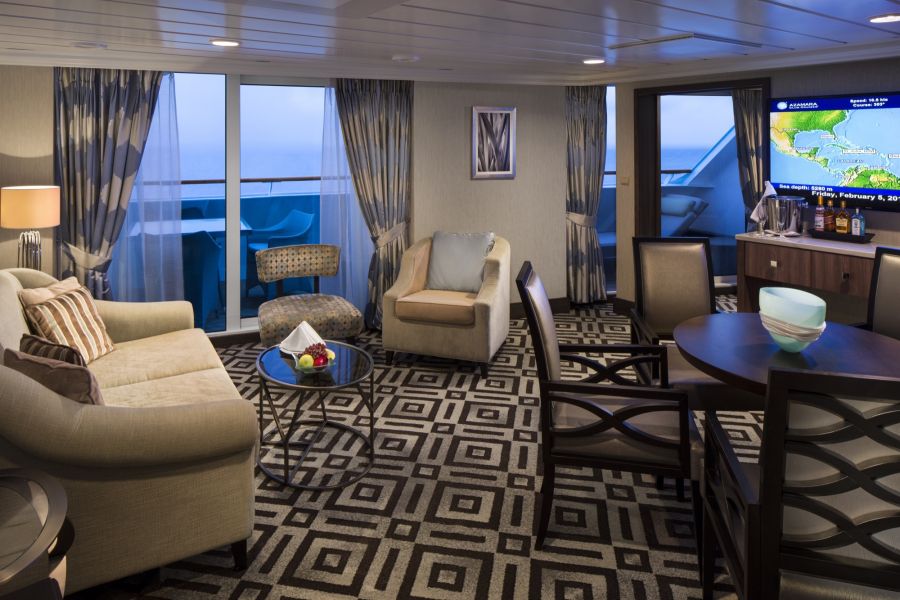
When you step inside your Club Ocean Suite, you step inside a large suite with elegant, contemporary décor. These suites feature new furnishings and wallpaper, plush carpeting, writings desks and more. With a large living room and a separate bedroom, and floor-to-ceiling sliding glass doors that open to your own private veranda, your suite will be a wonderful respite from your many experiences on land. Marble master bath and dressing room with vanity make it easy and comfortable to get ready for the day—or for an evening dinner out. Large flat-screen television, mini-bar, and other fine amenities add to the comfort of the suite. You’ll be spoiled by the attention to detail in these beautiful suites, and of course, all the pampering, too.
Features:
Complimentary Features:
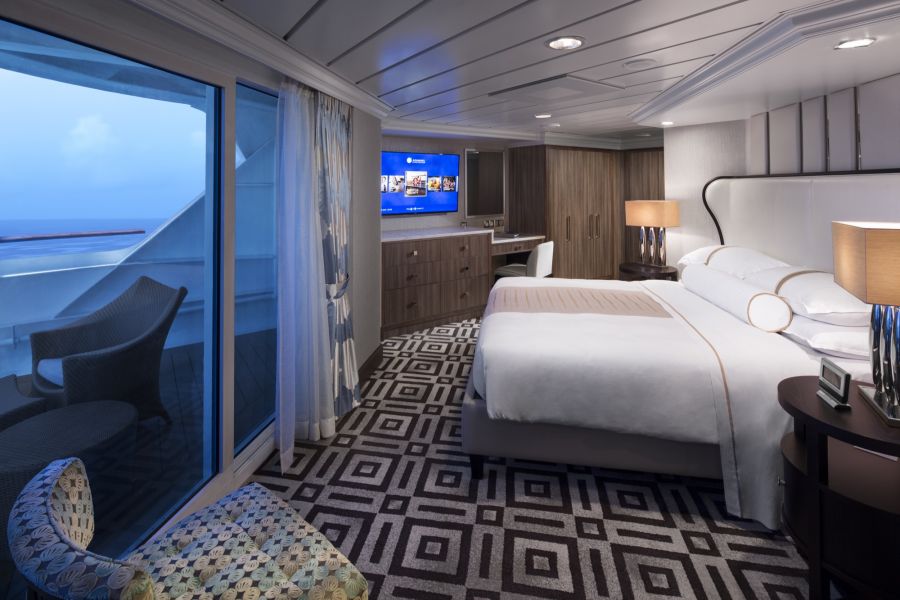
Our largest suites have been transformed to feature contemporary design elements that create an elegant and organic feel. The design draws inspiration from nature—a sandy cliff, flowing river beds, exquisite white sand beaches, and rustling grasses.
These luxurious accommodations feature a large living room with a separate bedroom, floor-to-ceiling sliding glass doors that open to your own private veranda, marble master bath, large flat-screen television, mini-bar, and many other amenities. Enjoy everything our Club Owner’s Suites have to offer, and of course, all of the pampering that comes with them.
Features:
Complimentary Features:
The images shown are for illustration purposes only and may not be an exact representation of what you find on the ship.
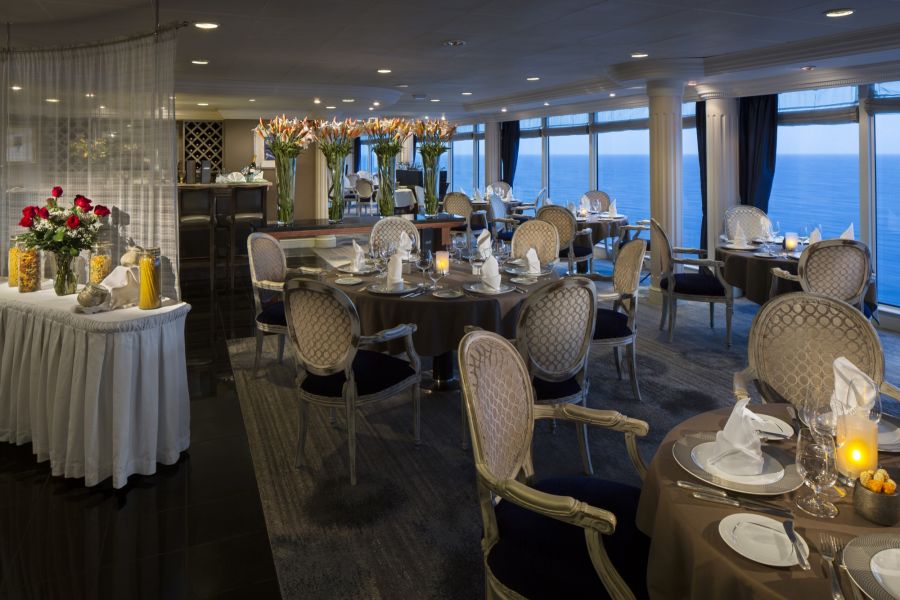
At Aqualina, you’ll find some of Italy’s most authentic dishes. Pastas made from scratch, traditional and authentic recipes, and scrumptious vegetarian dishes that make sure there’s something for everyone. Savor a traditional Spaghetti Bolognese, enjoy a classic Antipasti or a hearty Fisherman’s Soup or an Eggplant Parmesan to a Rigatoni Pomodoro with fresh veggies. You won’t be able to say no to our famous desserts: Sorrento lemon liqueur mousse, hazelnut chocolate soufflé and more. Our chefs love to be inspired, so after an on-shore visit to a local market, you can also expect a delectable dish so local, you’ll feel like you’re not onboard anymore.
Specialty dining is complimentary for suite guests. For others, there is a $30 per-person cover. Reservations are highly recommended.
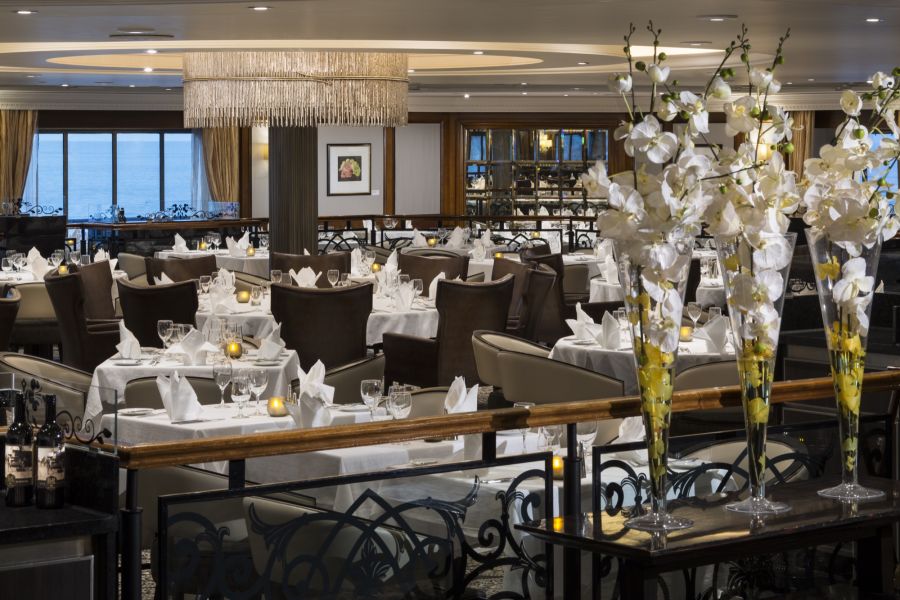
Discover the world through dishes and flavors from the places we visit. Whether it’s our Destination Immersion dinner buffet or the Destination Immersion cuisine on our dinner menu, give your dining a little local flavor and enjoy on shore tastes onboard! Of course, you will also enjoy a wide variety of nightly selections such as filet mignon with black truffle sauce. With its elegant yet lively dining and renewed décor, it’s easy to see why this restaurant is a hands-down favorite, the culinary heart of our ships. Gather at Discoveries Bar for drinks before or after dinner.
Reservations are not accepted. Choose being seated at a table for two or as part of a larger group of fellow guests (which we highly recommend! It’s a great way to meet new people).
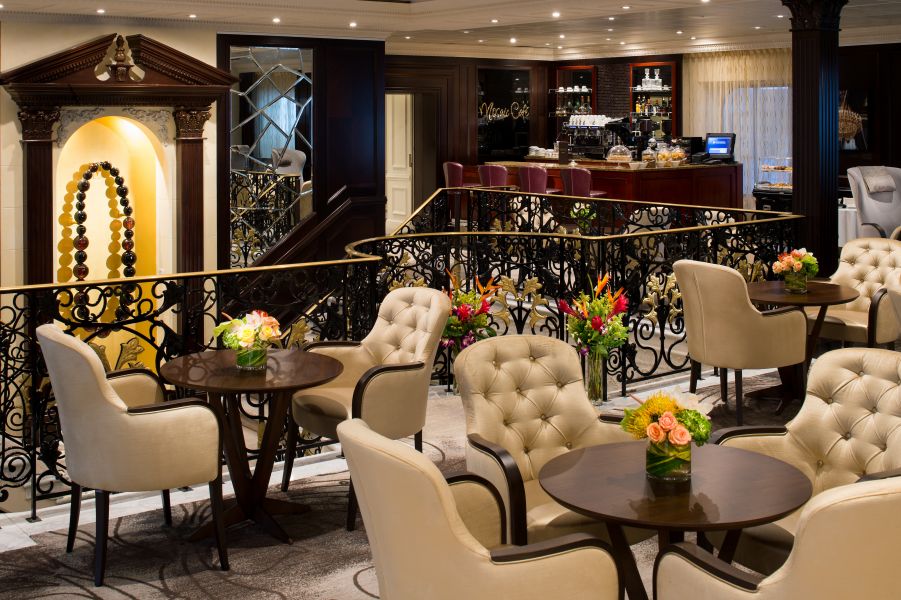
Comfortable and stylish, Mosaic is the place where you’ll find your favorite coffee drinks, just the way you like. Try our Nespresso specialty coffee (for a fee). Slip into a comfortable seat and sip for a while. The perfect place to start (or end) your day, no matter where you are in the world. This just might become your favorite area on the ship.
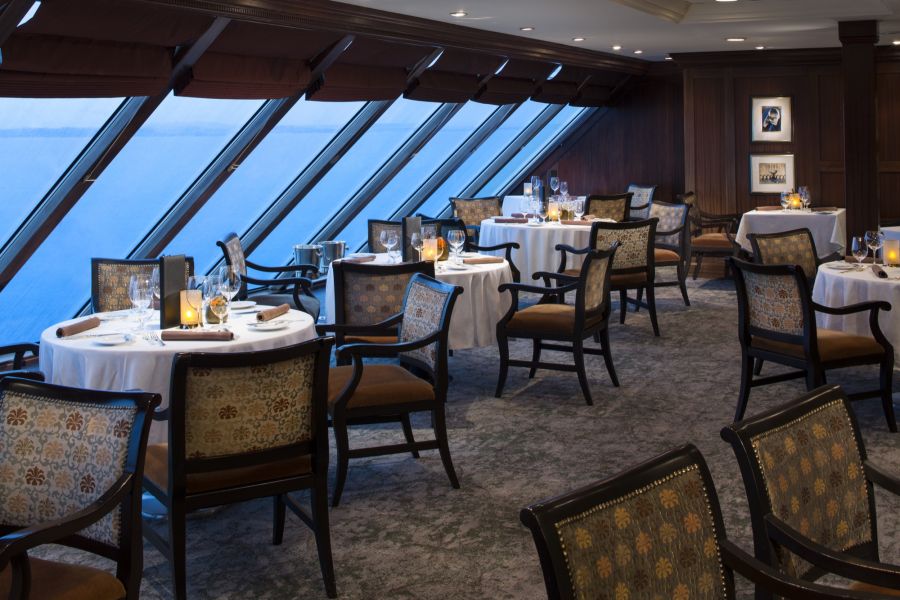
Steaks cooked to perfection. Crab cakes with remoulade. Lobster bisque. Lamb, game hens and seafood. And last but certainly not least, our famous mini cinnamon-sugar donuts with dipping sauces for dessert. (Yes, they are as good as they sound.) But at Prime C, you’re in for more than an array of delectable dining. Expect a marvelous evening in a warm wood-paneled ambiance with stunning views and lush décor. And, if our chef has made a visit to a local market while we’re in port, you’ll also have an authentic local dish to look forward to, made just for you.
Specialty dining is complimentary for suite guests. For others, there is a $30 per-person cover. Reservations are highly recommended.
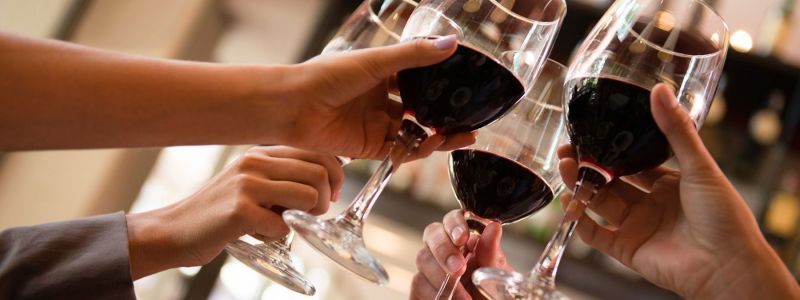
You’ll be hard-pressed to find such a collection of limited production, small label and rare vintage wines anywhere on the high seas! And with vintages from France to California, and Argentina to South Africa, you’re sure to find a wine to suit your palate. And your journey. Our knowledgeable sommeliers can help you pick the perfect wines for your evening meal—and your voyage!—and be sure to join our Wine Corner gatherings in the Mosaic Café, perfect for discovering and enjoying new wines and benefiting from the thoughtful guidance of our sommelier.
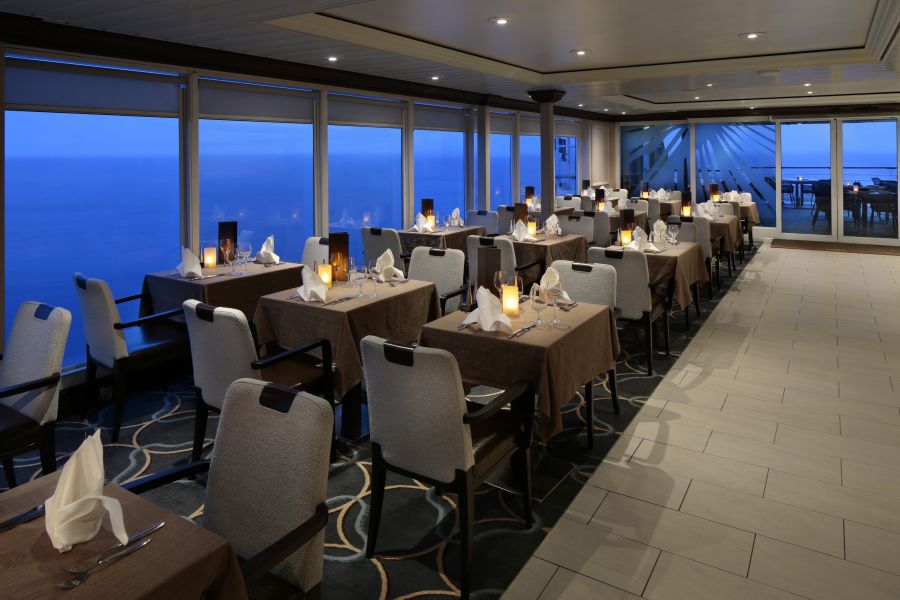
The best way to see where you are in the world is not by looking at your itinerary. It’s by checking out the menu at Windows Café! Our daily themed dinner often takes its inspiration from the region we’re visiting—Indian, Mexican, Spanish, Italian. We also create an extra live station made from local ingredients purchased in port: Greek salad made with local feta (Greece), pasta prepared with local mushrooms (Italy), fresh Mussels served with garlic bread (Netherlands). Take in the fresh breeze at an outdoor table and relax in the easy and casual atmosphere of the newly renovated Windows Café. Enjoy an intimate breakfast, lunch, or dinner for two or a lively meal for six with our flexible seating options. And speaking of choices, selections change daily. Choose from fresh sushi, stir-fry and pasta, salads, smoked lox and other cold fish, a carving station and of course, desserts.
The images shown are for illustration purposes only and may not be an exact representation of what you find on the ship.
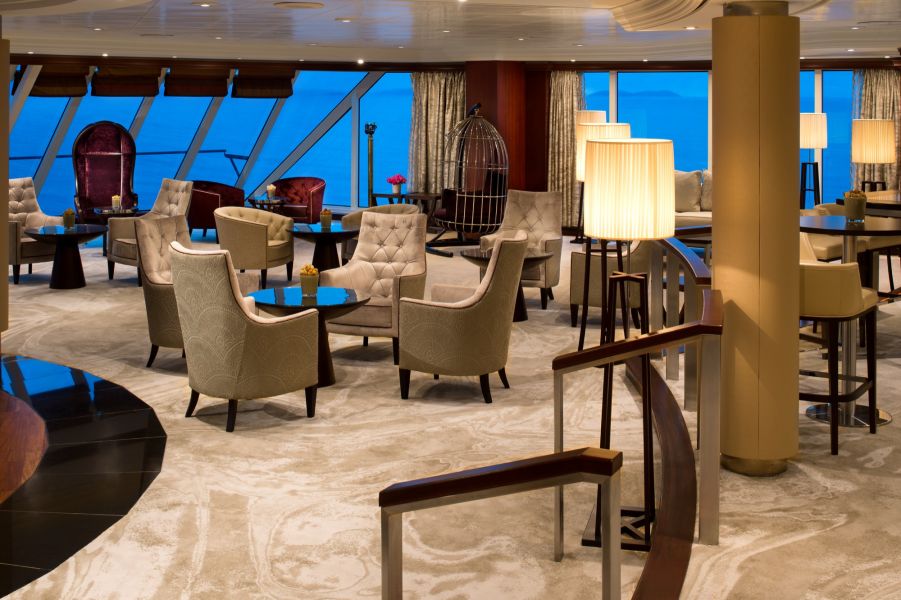
The idea of the Living Room is just that. To “live in” and to enjoy time with friends and fellow guests! Much of the room is furnished as a living room, with clusters of large comfortable chairs and sofas....
CARD ROOM
On the starboard side of the Living Room, guests will find the Card Room for those who love a round of Bridge or other games.
IN TOUCH
Inside the Card Room guests will have four computers available for use during the voyage.
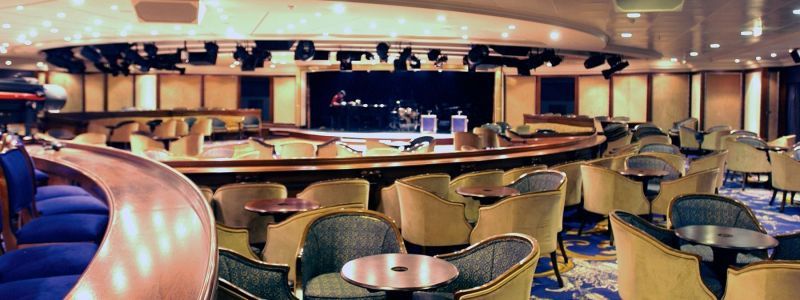
Enjoy live performances of professional full-stage musical revues, classical soloists, bands and other entertainment in a cabaret nightclub with a full bar and cozy tables. You could see as many as three distinctly different shows while onboard. And considering the cost of theater and entertainment tickets back home, isn’t that nice?
The Azamara Quest Singers and Dancers will feature three shows that will make your memories flow.
Come Sail Away
Our Azamara Signature Singers & Dancers come together to take you on a journey around the globe, through music and dance. Enjoy the lush Latin beats, tantalizing tribal drums, and astounding Italian arias, all from your seat in the Cabaret Lounge. Come, join us on this exciting adventure that’s certain to inspire all music lovers with a sprinkling of wanderlust.
Jump, Jive, and Swing
At Azamara, we know that it don’t mean a thing if it ain’t got that swing, so get ready to journey back with us to the swinging dance socials and sock hops of yesteryear. We’re striking up the band and invite you to jump out of your seat and get to the beat for a lindy hop, jitterbug, or charleston.
Just Dance
Azamara proudly presents Just Dance, a celebration of the world’s most iconic dance hits. Waltz, quickstep, tango—you name it, we’re going to dance it. This high-energy show is sure to find yourself tapping your toes in no time, as we move and groove to this smattering of different dance styles and tear up the dance floor, with hits like OPen Arms, Last Dance, Great Balls of Fire, Dancing Queen, and more.
The images shown are for illustration purposes only and may not be an exact representation of what you find on the ship.
The images shown are for illustration purposes only and may not be an exact representation of what you find on the ship.
| 12 nights aboard the Azamara Quest | |||
| AzAmazing Evenings event on voyages over 7 nights | |||
| Pre-Paid Gratuities | |||
| Select standard spirits, international beers & wines | |||
| Free bottled water, soft drinks, specialty coffees & teas | |||
| Concierge services for personal guidance & reservations | |||
| Free self-service laundry | |||
| Shuttle service to & from port where available | |||
| English Butler Service for suite Guests | |||
| Port Taxes and Fees | |||
 | ABTA and ATOL Protection* | ||
Date 19th Jun 2025 |
Nts 12 |
Interior £1,969pp |
Oceanview £4,269pp |
Balcony  |
Suite  |
Date 19th Jun 2025 |
Nts 12 |
Interior £1,969pp |
Oceanview £4,269pp |
Balcony  |
Suite  |


| Interior staterooms from | £1,969pp | ||
| Z | Interior Guarantee | £1,969pp | |
| Oceanview staterooms from | £4,269pp | ||
| 5 | Club Oceanview Stateroom (Deck 4, Mid) | £4,269pp | |
Fusion Cruises when selling travel arrangements is a trading name of The Midcounties Co-operative Ltd. Fusion Cruises is an Accredited Body Member of Midcounties Co-operative Travel Consortium. (ABTA:P6652, ATOL:6053).
Book with Confidence. We are a Member of ABTA which means you have the benefit of ABTA’s assistance and Code of Conduct.
Some of the flights and flight-inclusive holidays on this website are financially protected by the ATOL scheme but ATOL protection does not apply to all holiday and travel services offered on this website. This website will provide you with information on the protection that applies in the case of each holiday and travel service offered before you make your booking. If you do not receive an ATOL Certificate then the booking will not be ATOL protected. If you do receive an ATOL Certificate but all parts of your trip are not listed on it, those parts will not be ATOL protected. Please see our booking conditions for information, or for more information about financial protection and the ATOL Certificate go to: www.caa.co.uk
